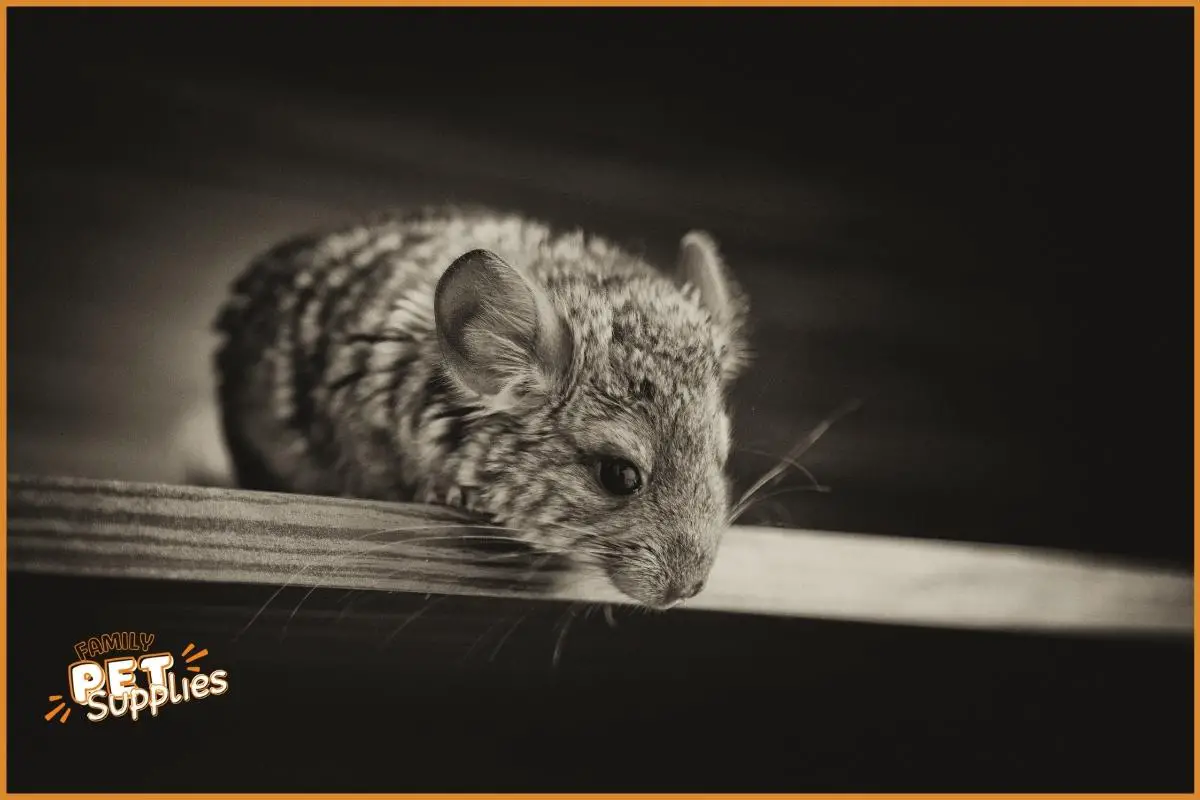Hay is a fundamental component of a chinchilla’s diet, providing essential fiber for digestion and dental health. Timothy hay is particularly recommended. Chinchillas should have a constant supply of fresh hay available. It’s vital for their overall health and well-being.

Key Takeaways
- Hay is crucial for a chinchilla’s overall health, providing essential fiber for digestion and promoting dental health.
- Timothy hay is the most recommended type of hay for chinchillas, as it has a lower calcium content and helps prevent urinary tract problems.
- Hay provides essential nutrients for chinchillas, aids in digestion, and is a healthier alternative to sugary treats.
- Introducing hay gradually alongside their regular food and providing fresh hay is important for chinchillas’ well-being.
Importance of Hay for Chinchillas
You should prioritize the importance of hay in a chinchilla’s diet. Introducing hay to picky eaters can be challenging, but it’s crucial for their overall health.
Hay provides essential fiber for digestion and plays a significant role in their dental health. Chinchillas’ teeth continuously grow, and chewing on hay helps wear them down and prevent overgrowth. Without enough hay, their teeth can become too long, leading to dental problems and potential pain.
Timothy hay is particularly recommended for chinchillas due to its high fiber content. Make sure to provide your chinchilla with a constant supply of fresh hay to ensure their dental health and overall well-being.
Types of Hay Suitable for Chinchillas
Continuing the discussion on the importance of hay for chinchillas, it’s essential to consider the types of hay suitable for their diet.
There are different types of hay that chinchillas can eat, but the most recommended is Timothy hay. This type of hay has a high nutritional value and provides the necessary fiber for digestion and dental health.
Other types of hay, such as alfalfa or orchard grass, can also be given to chinchillas in moderation. However, Timothy hay is the preferred choice due to its low calcium content, which helps prevent urinary tract problems.
Remember to always provide a constant supply of fresh hay for your chinchilla to ensure their overall health and well-being.
Benefits of Hay in Chinchilla’s Diet
Hay provides essential nutrients and aids in digestion and dental health for your chinchilla. It’s a crucial part of their diet and should be available to them at all times.
In addition to its nutritional benefits, hay also serves as a treat for your furry friend. Chinchillas love to nibble on hay, and it provides them with mental stimulation and a sense of satisfaction. It’s a much healthier alternative to sugary treats that can lead to weight gain and dental problems.
While there are alternatives to hay for chinchillas, such as pellets and fresh vegetables, these should only be given in small amounts and as supplements to their main hay diet. Hay remains the best option to ensure your chinchilla’s overall health and well-being.
Hay as a Source of Fiber for Chinchillas
As we delve into the importance of hay in a chinchilla’s diet, it’s essential to highlight its role as a significant source of fiber.
Fiber plays a crucial role in a chinchilla’s digestive system, aiding in proper digestion and preventing issues like bloating and gastrointestinal stasis.
Hay helps maintain a healthy gut by promoting regular bowel movements and preventing the formation of hairballs.
Moreover, the constant chewing required to consume hay helps keep their teeth in good condition.
However, it’s important to note that some chinchillas may develop hay allergies, characterized by respiratory symptoms such as sneezing or coughing.
In such cases, alternative hay options like orchard grass or oat hay can be considered.
These alternatives may provide similar benefits while minimizing the risk of allergies.
How to Introduce Hay to Chinchillas
To incorporate hay into your chinchilla’s diet, you can gradually introduce it alongside their regular food. Chinchillas can be sensitive to sudden dietary changes, so it’s important to introduce hay slowly. Start by offering a small amount of hay and gradually increase the quantity over time.
You can mix the hay with their regular pellets or place it in a separate dish. To make the hay more enticing, you can try sprinkling some treats on top or hiding treats within the hay. This will encourage your chinchilla to explore and eat the hay.
Remember to always provide fresh hay and remove any uneaten hay to ensure its freshness. With a gradual introduction and some tasty treats, your chinchilla will soon be happily munching on hay.
Hay-Related Health Issues in Chinchillas
Are there any potential health issues that can arise from a chinchilla’s consumption of hay?
While hay is a crucial part of a chinchilla’s diet, it’s important to be aware of possible health issues. Some chinchillas may develop hay allergies, which can cause symptoms such as sneezing, nasal discharge, and itching. If you notice these signs after introducing hay to your chinchilla’s diet, it’s best to consult a veterinarian for guidance.
Another concern is hay mites, tiny parasites that can infest hay. These mites can cause skin irritation and discomfort for your chinchilla. To prevent this, make sure to purchase hay from a reputable source and store it properly to avoid mite infestation. Regularly inspect the hay for any signs of mites and discard any contaminated hay to protect your chinchilla’s health.
Tips for Providing Hay to Chinchillas
You should always ensure that you provide your chinchilla with fresh hay.
When introducing hay to your chinchilla, it’s important to do it gradually. Start by offering small amounts in their cage, and gradually increase the quantity over time. This allows them to adjust to the new food and prevents digestive issues.
To prevent hay wastage, use a hay rack or hay feeder. These devices help keep the hay clean and off the floor, reducing the chances of contamination. Additionally, they can also minimize the amount of hay that gets scattered or soiled.

